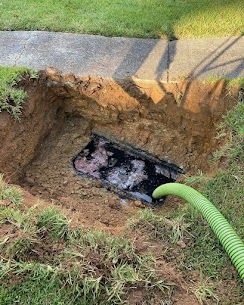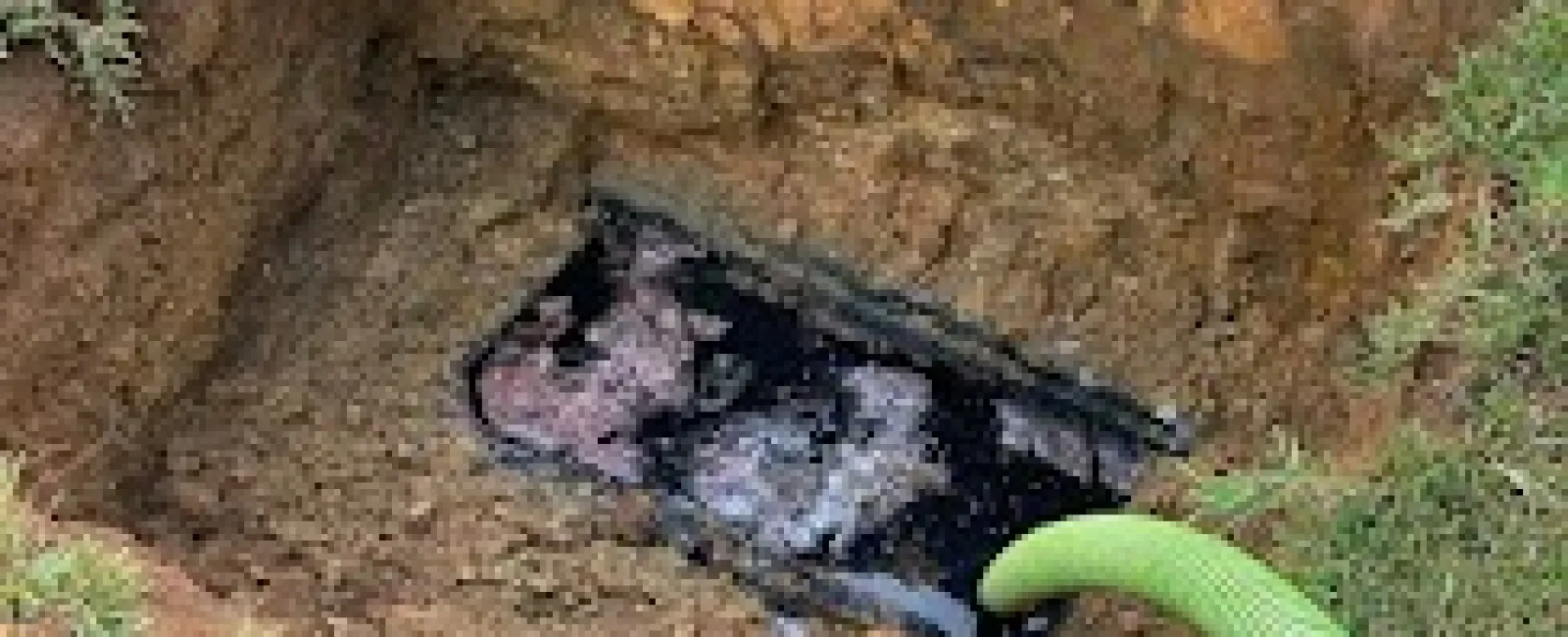
What Are Septic Tank Drain Lines?
Septic tank drain lines, also known as septic field lines or leach lines, are a network of perforated pipes buried in a drain field. Their primary function is to receive partially treated wastewater (effluent) from the septic tank and distribute it evenly into the soil for natural filtration and absorption. The health of these lines is critical for the proper functioning of the entire septic system.
How Do Septic Field Lines Function?
The septic line network operates after solid waste settles in the septic tank. Liquid effluent flows from the tank, often through a distribution box (D-box) that ensures even flow to each pipe, and into the septic drain lines. The effluent seeps out through the perforations in the pipes, travels through a layer of gravel or into specially designed chambers, and is finally purified by microbes in the soil before safely re-entering the groundwater table.
The Role of a Distribution Box in a Septic System
A distribution box, or D-box, is a small concrete or plastic container that receives effluent from the septic tank before it enters the septic field lines. Its purpose is to split the flow of wastewater evenly among the various lines of the drain field. An unleveled or damaged distribution box can lead to overloading specific septic drain lines, causing localized saturation and premature system failure.
Types of Septic Drain Line Systems
Septic drain fields are not one-size-fits-all; their design depends on soil type, property size, and local regulations. Conventional systems use gravel-filled trenches where perforated septic drain lines are laid. Chamber systems use large, hollow, arch-shaped structures instead of gravel, providing a larger void space for effluent. Drip distribution systems use a network of small tubing to slowly and evenly dose the soil with effluent, which is ideal for properties with poor soil or challenging terrain.
Common Materials Used for Septic Lines
Modern septic drain lines are typically made from durable PVC (polyvinyl chloride) pipe due to its resistance to corrosion and root intrusion. Older systems may feature septic lines made of clay tile or perforated bituminous fiber pipe (Orangeburg pipe), which are more susceptible to crushing, cracking, and root damage over time.
Common Problems with Septic Drain Lines
Problems within the septic drain field often manifest as slow drains, foul odors, or soggy ground. Identifying the specific cause is key to an effective repair.
Clogged or Blocked Septic Lines
A clogged septic line is a common issue caused by solids escaping the septic tank, grease buildup, or flushing non-biodegradable items like wipes and hygiene products. Tree root intrusion is another frequent cause, as roots seek out the nutrient-rich water and can enter the septic drain through small cracks or joints, eventually blocking the pipe.
Crushed or Damaged Septic Drain
Septic field lines can be crushed or damaged by heavy vehicles, construction equipment, or even cars repeatedly driving or parking over the drain field area. This physical damage prevents the flow of effluent and can require excavation and replacement of the affected septic tank drain line section.
Biomat Clogging and Soil Saturation
A biomat is a black, slimy layer of anaerobic bacteria that naturally forms around the septic drain lines and helps filter pathogens. However, if too many solids overload the system, this biomat can become too thick, preventing water from being absorbed by the surrounding soil. This leads to hydraulic overloading, where the drain field becomes saturated and effluent surfaces or backs up into the home.
How to Maintain Your Septic Tank Drain Lines
Proactive maintenance is the most effective way to extend the life of your septic field lines and prevent costly failures.
Regular Septic Tank Pumping
Pumping your septic tank every 3-5 years is crucial. This removes the accumulated solid sludge and scum, preventing it from flowing into and clogging the septic drain lines. An effluent filter, installed at the outlet of the septic tank, provides an additional layer of protection by trapping suspended solids before they reach the drain field.
Manage Household Water Usage
Overloading your septic system with excessive water can saturate the drain field, preventing it from properly absorbing and treating effluent. Spread out laundry loads throughout the week, promptly fix any leaking faucets or toilets, and install high-efficiency fixtures to reduce the hydraulic load on your septic drain.
Protect the Drain Field Area
Never build structures, plant trees with aggressive root systems, or drive heavy vehicles over your septic field lines. The soil needs to remain unsaturated and uncompacted to function correctly. Direct runoff from roofs and driveways away from the septic drain area to prevent additional water from flooding the field.
Repair and Replacement of Septic Drain Field Lines
When a septic drain fails, the solution can range from a targeted repair to a full replacement.
Can a Single Septic Line Be Repaired?
Yes, a single damaged or clogged septic line can often be repaired without replacing the entire field. Hydro-jetting can clear blockages from roots or sludge. If a section of a septic tank drain line is crushed, that specific portion can be excavated and replaced. This is a cost-effective solution when the rest of the drain field remains healthy.
Septic Drain Field Rejuvenation vs. Replacement
For fields suffering from compacted soil or heavy biomat buildup, rejuvenation techniques like the Terralift process can be an option. This method fractures the soil by injecting compressed air, breaking up the biomat and improving drainage. Rejuvenation is less expensive than a full replacement but is only suitable if the primary septic drain lines are still intact.
Cost to Repair or Replace Septic Field Lines
The cost to fix a septic drain varies widely based on the extent of the damage. A minor spot repair on a single septic line might cost between $1,000 and $5,000. A complete drain field replacement is a major project that can cost from $10,000 to $20,000 or more, depending on system size and soil conditions. At Scorpion Septic, we offer a free pump out with all major repairs, providing significant savings and essential maintenance in one service.
When to Call a Professional for Your Septic Drain
If you notice slow drains, gurgling toilets, sewage odors in your yard, or unusually green or marshy spots over the drain field, it's time to call a professional. Attempting a DIY repair on a septic line can lead to further damage or environmental contamination. The experts at Scorpion Septic can accurately diagnose the issue with your septic tank drain lines and recommend the most effective solution. Contact us today for an inspection or emergency service.

